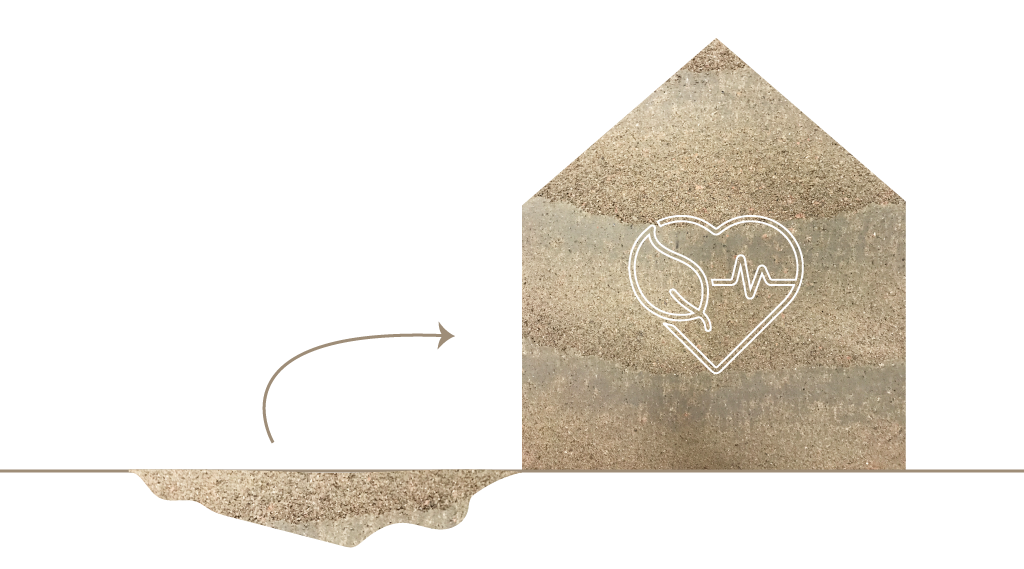CLAY-VER
To build with what is under our feet
An exploration of the use of excavated clay for the indoor climate in Göteborg and its application.

“All things come from earth and all things go back to it.“
Ménandre, 342 B.C – Greek Dramatist
ABSTRACT
Humanity is facing one of the most crucial challenges ever known: tackle global warming. Emissions from the construction field increase every year and represent 39% of the overall CO2 emissions in Europe.
To reduce its impact, a building must not only achieve low operating energy but also take into account the material’s low embedded energy, a high circularity potential, and a healthy indoor climate. Aware of this, the city of Göteborg has initiated a project to build a fossil-free preschool: the Hoppet Project. Here, such as in many cities, a large amount of clay is excavated each year for different buildings and infrastructure projects. While clay is a natural material and a resource, it is considered as waste and must be cleared out of the building site. An initiated project, “Recirculate”, aims to find new use for that clay, and works in collaboration with the Hoppet project.
Within this frame, the objective of this master thesis is to highlight the potential of excavated clay for the benefits of the indoor climate. Indeed, clay has always been used and has very good properties which participate in low-tech climate regulation. It wants to encourage the use of clay waste to build sustainable buildings suitable for temperate and cold climates like Göteborg and to make more reasonable use of resources.
Literature research, field tests, and case studies frame the potential use of clay waste and its properties, with an emphasis on indoor climate. Based on this exploration, a catalog of clay material solutions is compiled to show where and how it can be used and to illustrate its aesthetic potential. This document is then used to develop a generic design proposal, which is a testbed on the Hoppet project. This testbed aims to explore possible clay implementations in an adapted way for the indoor climate and to propose an answer to the question. Finally, comparisons with the original hoppet materials show that clay is relevant in a fossil-free and zero-emission concept.
Those elements are expected to be used references to promote these materials, increase awareness, and inspire to build for sustainability.
Key Words: Excavated Clay – Natural Material – Circular material – Health – Indoor Climate – Testbed – Preschool
CONTENT
Introduction – p.2
Clay in theory – p.3
Clay in practice – p.4
Catalog – p.5
Generic design – p.6
Reflections – p.7
